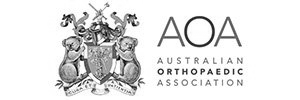Elbow Replacement Surgery
What is a Elbow Replacement Surgery?
Elbow Joint Replacement, also known as Total Elbow Arthroplasty is a procedure designed to treat advanced arthritis of the elbow joint.
The elbow is a hinge joint formed by three bones the upper arm (Humerus) with the lower arm bones (Radius & Ulna) and when the function of this joint is impaired by arthritis, the elbow joint can become painful and less mobile.
The goal of elbow joint replacement surgery is to eliminate your pain and increase the mobility of your elbow joint.
When is Elbow Replacement Indicated
Elbow joint replacement surgery may be recommended for the treatment of severe arthritis that has not responded to conservative treatment options such as medications or steroid injections.
Other indications for elbow joint replacement surgery may include:
- Severe elbow fracture in older patients with osteoporosis; a disease that causes bone loss and raises the risk of fractures
- Tumour or growth in the elbow joint
- History of previous elbow surgery
- Overall good health
Elbow Replacement Procedure Steps
The procedure is performed after appropriate diagnostic assessments, pre surgery checks and preparations are complete in a hospital and normally takes less than 90 minutes.
The procedure is performed under a general anaesthetic and includes the following steps:
- Small incision is made over the back of the elbow.
- Muscles are retracted, and tendons and ligaments are moved away to expose the elbow joint. Care is taken to move the ulnar nerve to prevent nerve damage.
- Damaged surfaces of the humerus, radius, and ulna are trimmed to create a smooth surface for the attachment of the implants.
- Inside humerus bone is hollowed and the prosthesis implant is insert and fitted
- Inside ulna bone is hollowed tand the prosthesis implant is insert and fitted
- Bones are then prepared and components are then inserted and combined ensuring proper movement of the hinge portion of the prosthesis.
- Joint components are tested through its range of motion.
- Joint capsule is then sutured together, the muscles and tendons are repaired and the skin sutures
- The elbow is then dressed and bandaged.
Elbow Replacement Surgery Preparation
Once you and the doctor have decided that surgery is required, preparation is necessary to achieve the best results and a quick and problem free recovery.
- Infections - Treat any tooth, gum, bladder or bowel problems before surgery to reduce the risk of infection
- Smoking - Stop or cut down smoking to reduce your surgery risks and improve your recovery
- Weight - Consider losing weight (if overweight) before surgery
- Medications - Refrain from taking medications or dietary supplements that may increase your risk of bleeding - refer Medication Information
- Fasting - Depending on the type of anaesthesia used, your doctor may advise you to refrain from eating and drinking six to twelve hours before the procedure.
- Getting Home - You will not be allowed to drive yourself home after the procedure, so make arrangements for someone to pick you up. If you live alone, arrange for someone to check on you that evening or, ideally, to stay with you for the rest of the day.
- Loose Clothing - If you're having surgery, wear loose, comfortable clothing, such as baggy gym shorts and slip-on shoes, so you can easily undress and dress.
Returning Home After Surgery
When you go home you need to take special precautions around the house to make sure it is safe. Your post operative plans should include:
- Mobility or Stability - changes (rails in your bathroom, ramps for stairs)
- Sleeping - modify your sleeping arrangements (especially if you are sleeping upstairs) for easy access
- Access - ensure you have easy access to food, water, medications and any other essentials
- Showering - will be allowed once the wound is healed, or as indicated
Assess your home situation to ensure you have adequate home support in the first few weeks following surgery. If you live alone it may be necessary to arrange a package of community care to help during the first few weeks at home.
Elbow Replacement Surgery Process
Elbow Replacement Rehabilitation Program
Elbow Replacement Risks & Complications Associated
Surgical Follow Ups
How Risks Are Minimised
Get Moving Quickly
Early mobilisation is a major preventive measure. We strongly encourage you to get moving and out of bed as soon as possible after the operation to restore normal blood flow in the legs.
You should aim to do at least ten short walks (of between 2 and 5 minutes) each day in the first two weeks after surgery.
How Can I Minimise Post Operative Complications
Blood clots (DVT or PE)
All patients receive a number of treatment measures to reduce the risk of blood clots. These include
- Injections of heparin during and after surgery,
- Sequential calf compression device (SCD) whilst on the operating table, and
- Special leg stockings (TEDS)
As a result of these measures, we have never had a patient develop a deep venous thrombosis. Any patient who is at high risk of a blood clot (such as a history of blood clots or clotting disorders) may be asked to continue heparin (Clexane) injections for 10 days after the surgery in addition to the other measures. This can be done at home, and we will show you how.
What Are the Consequences of Surgery?
Sometimes the potential risks and consequences of your surgical procedure need to be weighed against the benefits of a successful surgical outcome.
Like most surgery these benefits can include:
- Freedom from pain
- Increase movement
- Greater Flexibility,
- Maintained Independence
- Improved outlook, and
- Longer more enjoyable life
Although the recurrence of the presenting problem is not very common, after surgery, you would need to follow preventive measures.
It is important to avoid high impact activities during the early phase of recovery to minimise the risk of further injury. If there are any postoperative concerns or pain, please do not hesitate in contacting our rooms.






